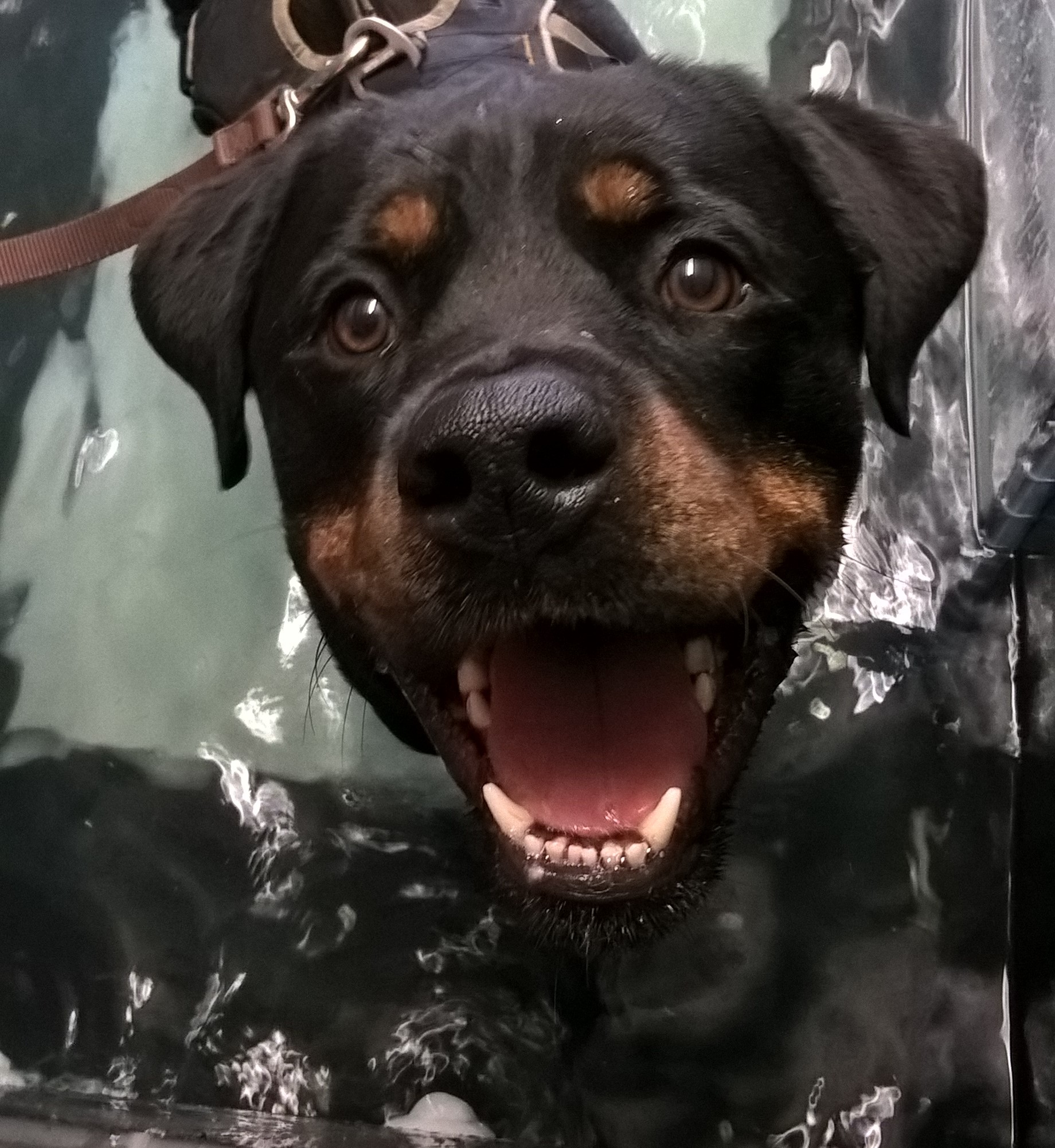Hydrotherapy

Hydrotherapy can be used in the treatment of osteoarthritis, orthopaedic conditions, neurological conditions, muscle, ligament and other soft tissue injuries.
It can also help with general convalescence and fitness.
Extensive work in human physiotherapy has demonstrated that a suitably monitored course of hydrotherapy acts by encouraging a full range of joint motion in reduced weight bearing conditions, thus improving muscle tone and promoting tissue repair, without imposing undue stress on damaged tissues.
Hydrotherapy helps to improve general fitness, cardiovascular stamina, muscle tone and is also helpful in aiding recovery from injury or surgery and improves fitness, especially in the management of obesity.
Muscle wastage begins within 3 days of any immobilisation so to prevent further weakness or injury it is important to rebuild, through safe exercise, any muscles that have deteriorated. It is better to treat dogs in heated water since cold water causes constriction of the blood vessels near the skin and to the superficial muscles (those just under the skin) which restricts the flow of blood making the muscles less efficient.
Hydrotherapy is also considered to be a natural anti-inflammatory through its ability to reduce tissue swelling.
Your pet is in safe hands with our qualified caring staff, dedicated to helping with fitness and rehabilitation in canines across Tredegar and surrounding areas.
The benefits of canine hydrotherapy:
- Aids in the treatment of conditions including osteoarthritis, orthopaedic conditions, muscle and ligament problems
- Increases range of motion in joints, improving muscle tone and tissue repair without imposing undue damage
- Improves general fitness, cardiovascular stamina, muscle tone and injury recovery

Case Study: Buster’s Road to Recovery
Background
Buster, a young and adventurous dog, suffered a serious accident during a walk when he jumped over a cliff. After an eight-hour mountain rescue, he was brought to safety, but the fall left him paralysed in his hind limbs.
Following veterinary assessment, his owners, Jamie and Jo, were advised that euthanasia would be the kindest option. Determined to give Buster every chance, they researched rehabilitation—and found us.
Initial Assessment
On his first visit we completed a full evaluation. Despite severe paralysis, there was a very slight pain response to a toe pinch, indicating a slim possibility of recovery. With nothing to lose, we agreed to begin an intensive rehabilitation programme.
Treatment Plan
We implemented a multi-modal plan to stimulate movement, protect joints, and encourage nerve recovery:
- Massage therapy to improve circulation and muscle tone
- Passive Range of Motion (PROM) to maintain joint flexibility
- TheraPlate to promote healing and muscle activation
- Movement enrichment to encourage natural patterns
- Hydrotherapy to build strength with low joint strain
Jamie and Jo followed his home plan daily, ensuring progress between clinic sessions.
Progress & Milestones
- Complete hind-limb paralysis
- Wobbly stand
- Tentative, unsteady walk
- Confident walking and playful activity (with sensible management)
Progress was slow but steady. Buster’s determination, combined with consistent therapy and outstanding owner commitment, turned a long shot into a success.
Outcome
Buster now enjoys a full, active life. He still benefits from activity management, but his quality of life has improved dramatically.
Key Takeaways
- Early, tailored rehabilitation can be life-changing—even in severe cases.
- Dedicated owner involvement is critical to recovery.
- With persistence and the right plan, meaningful progress is possible.
Conclusion
Buster’s journey reminds us to look for the possibility—no matter how slim—and to approach every case with determination and hope. Buster is, quite simply, a legend.